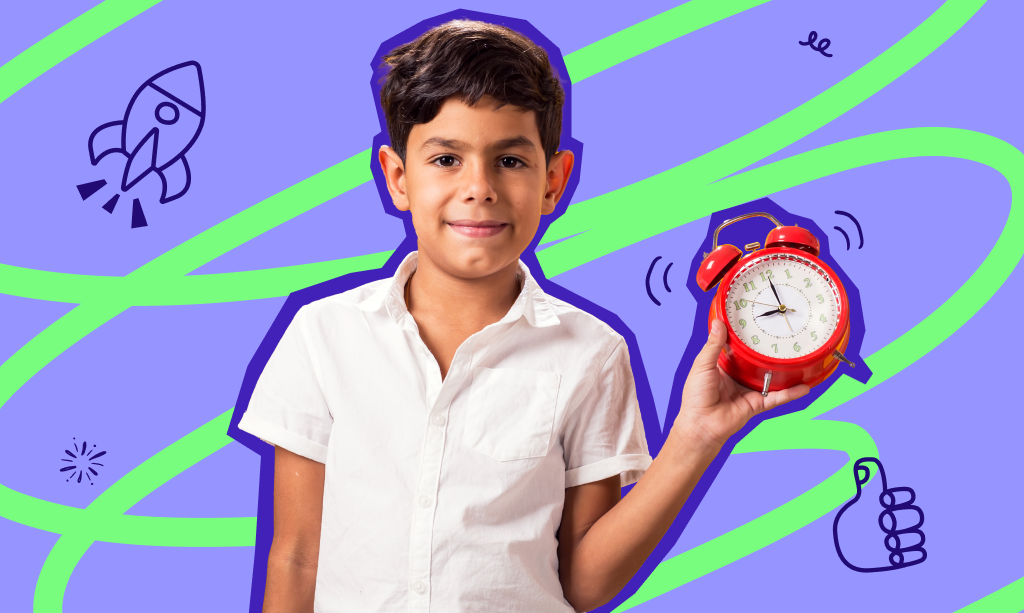- Hybrid learning combines in-person and online lessons, giving ESL students flexibility, structure, and more ways to practice English.
- Tools like NovaKid support personalized learning, helping students stay engaged through fun lessons they can access anytime, anywhere.
- While there are challenges like tech access and staying focused, setting routines and using guided platforms can help learners succeed in a hybrid environment.
Hybrid learning is becoming more and more popular in education today. It’s a mix of learning in a classroom with a teacher and learning online using videos, apps, or websites. This method gives students the best of both worlds—face-to-face support and the freedom to study at their own pace.
For students learning English as a second language (ESL), hybrid learning can be very helpful. It allows them to practice English in real-life situations with a teacher and classmates, while also using online platforms like Novakid to review lessons, build vocabulary, and improve their skills anytime, anywhere.

What is Hybrid Learning?
What does hybrid learning mean? The hybrid learning definition is a way of teaching that combines two methods: learning in person (face-to-face) and learning online. This mix gives students more options and helps teachers use different tools to make learning more fun and effective.
In a hybrid class or hybrid course, students might go to school a few days a week and then complete the rest of their lessons online at home. Or, they might do some activities in class—like speaking and group work—and watch videos or complete exercises online for homework. The goal is to use the best parts of both in-person and online learning.
The hybrid learning model of education blends different teaching methods so students can learn English in a way that fits their schedule, learning style, and level—making it easier and more enjoyable to improve their skills.
Key Features of Hybrid Learning Models
Hybrid learning has some important features that make it a great choice for English learners. Here are a few of the key things that make this model special:
Flexible Schedules
One of the biggest benefits of hybrid learning is flexibility. Students can join in-person classes to practice speaking and listening, then complete digital lessons at home when it works best for them. This makes it easier to fit learning into busy schedules.
Technology for Personalized Learning
Hybrid learning uses technology like apps, videos, games, and online platforms (like NovaKid) to give each student what they need. If one student needs extra help with grammar and another wants to work on speaking, they can each follow a path that matches their level.
Interactive and Engaging Content
Lessons in a hybrid model are designed to be fun and interesting. Whether it’s watching a video, joining a live session, or playing an English learning game, the mix of activities keeps students motivated. This also supports different learning styles.
Advantages & Benefits of Hybrid Learning in English Education
Now that we understand what hybrid learning is, let’s look at why it’s such a powerful tool for students learning English. This model offers several important benefits that make learning easier, more enjoyable, and more effective.
More Access for Students Around the World
Hybrid learning makes it possible for students to join classes from anywhere! With just a device and internet connection, learners can practice English—even if they don’t live near a school or tutor.
Balance of Group Learning and Independent Study
Students get the best of both worlds: real interaction with a teacher and classmates, plus time to study on their own. In-person or live online classes help them practice speaking and listening, while digital lessons like Novakid let them review grammar and vocabulary—and you can even book a free trial lesson to see how it works for your child!
Use of AI and Modern Tools
Hybrid learning often includes smart technology like AI tools, interactive games, and learning apps. These tools adjust to each student’s level and give instant feedback, helping them learn faster.
Supports Independent Learning and Motivation
Students in hybrid programs often feel more in control of their learning. They can choose when and how they want to study, which helps them stay motivated and take more responsibility for their progress.
Challenges and Considerations
Before we wrap up, it’s important to mention that while the benefits of hybrid learning are plenty, it also comes with a few challenges.
One common issue is limited access to technology. Not all students have a reliable internet connection or the right devices at home. Another challenge is self-discipline. With more freedom to study online, some learners, especially kids with no accountability, may find it hard to stay focused or keep up with lessons.
But the good news is—these challenges can be managed! Here are a few tips to help:
Set a routine: Try to study at the same time each day to build good habits.
Create a quiet study space: A calm, distraction-free area helps students focus better.
Use parental or teacher support: Adults can help guide younger learners and check in regularly.
Start with a platform like NovaKid: It offers structured lessons, fun activities, and support from professional teachers to keep students engaged and on track.
By planning ahead and staying consistent, students and parents can make the most of hybrid learning and enjoy a successful English learning journey!





































